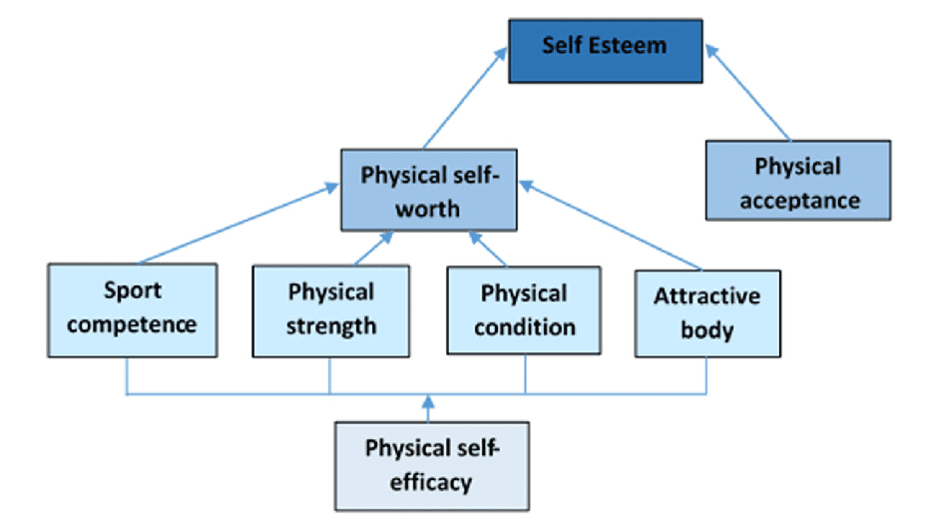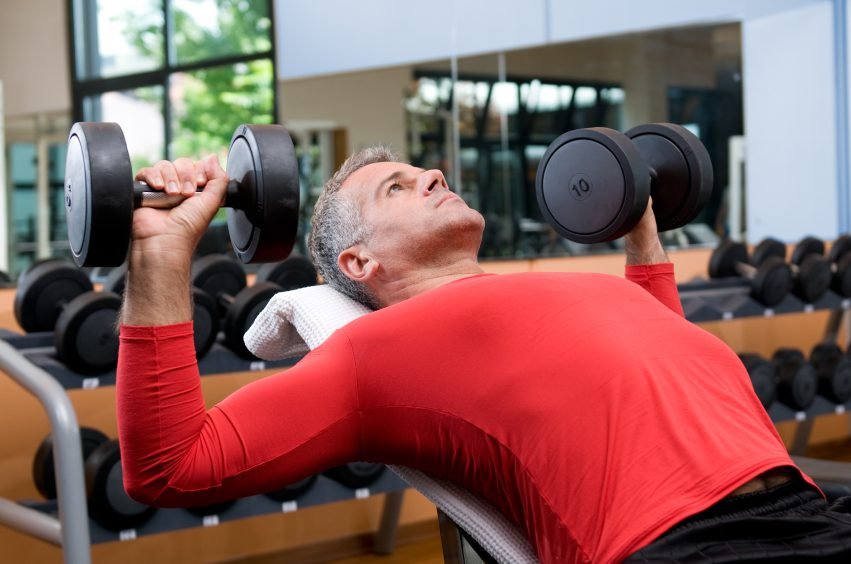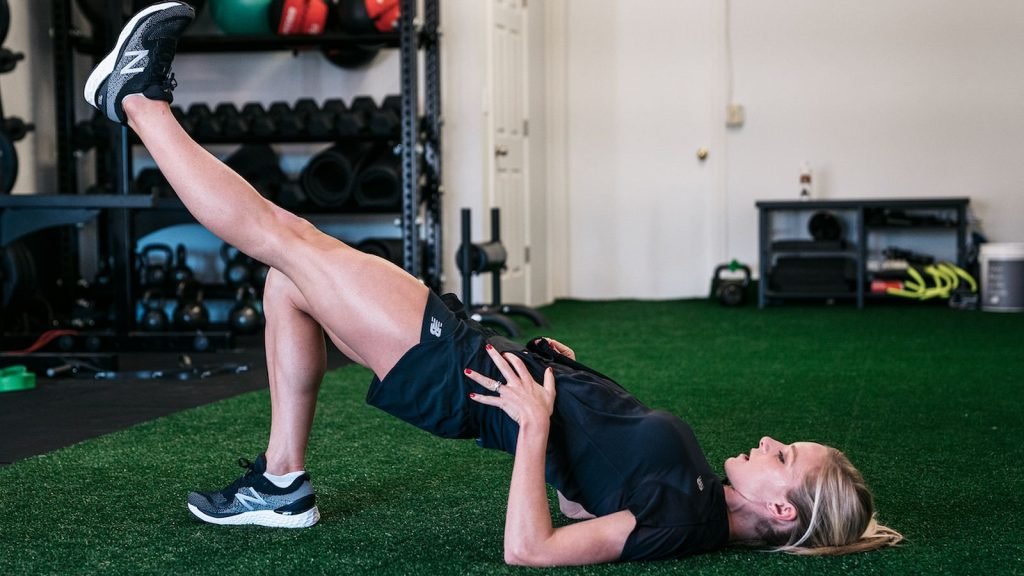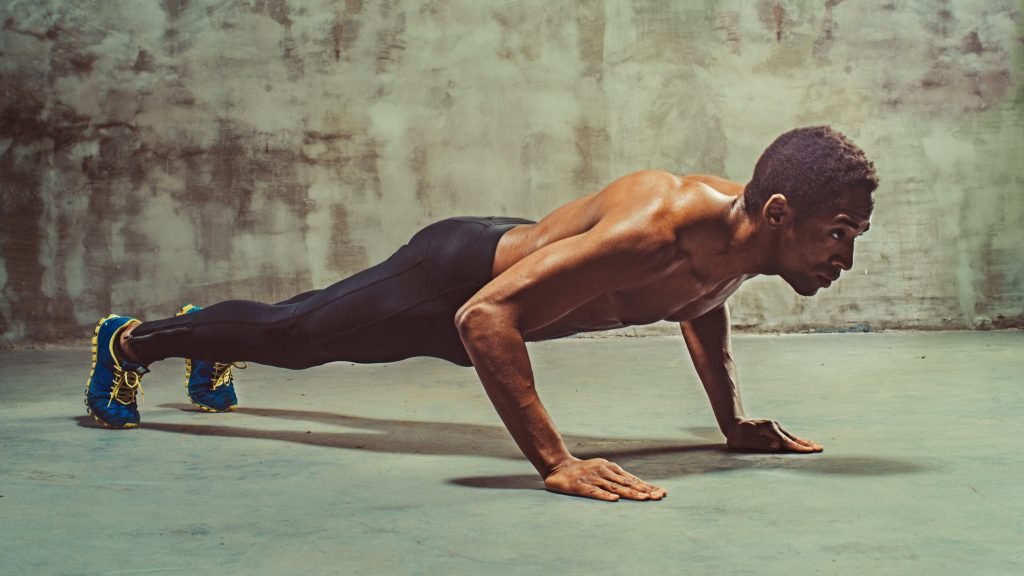Knowing the most recent trends and research is essential to attaining your health and fitness objectives because the fitness industry is continuously changing. This site is a great resource for you if you want to strengthen your muscles and increase your general fitness. It will give you a thorough overview of the science underlying strength training, along with the most recent findings and tried-and-true methods to help you get the most out of your exercise regimen. This blog is a must-read for anyone trying to get the most out of their strength training program because it offers professional advice and useful recommendations. This site contains something for everyone, whether you’re a novice or an experienced athlete, so start reading now and advance your fitness.
Science of Strength Training Part 1: 3 Incredible Perks for your Brain and Mental Wellness
Before we talk about the science of strength training. There are a lot of misconceptions about strength training that need to be disclosed, and most of them have to do with what people assume strength training actually does to your body.
Unless you’re a bodybuilder, strength training exercises from weight lifting to bodyweight movements like squats, push-ups, and planks will not make you bulk up, but they will offer a slew of other benefits — both physically, and mentally.
Here are a few examples of strength training benefits that affect your brain and mental health.
Strength Training Benefit #1 (Mental):
The 21st century life is, more often than not, hectic and stressful for most of us regardless of age. We find ourselves rushing from places to places, rushing to meet deadlines and rushing for rest. For most of us, our lives are practically lived on the go which makes us more prone to anxiety and restlessness as such. Exercise plays a vital role in alleviating this distress so that we feel more energised to tackle our lives and discover new passions which all contribute to living a meaningful life.
Strength Training Benefit #2 (Physiological):
Serotonin (5-HT), a hormone responsible for regulating our emotions and sleep, has been found to have increased turnover rates in marathoners compared to untrained individuals (Broocks et al., 2001). Exercise also improves the regularity of our daily lives which improves sleep and mood.
This is explained through the social zeitgeber theory proposed by Ehlers et al. (1993) which posits that environmental cues can influence our circadian rhythms.
In essence, exercise improves sleep and regulates our emotions which gives us the energy to do the things we want to do in life, with joy.
Strength Training Benefit #3 (Psychological):
Our conception of the “self” (e.g., self-esteem, self-efficacy, self-perception) has been positively correlated to physical activity (Biddle et al., 2019), and can be explained with Fox’s (1998) Exercise and Self-esteem Model (EXSEM) (figure 1) which posits that physical changes from exercise influences self-efficacy as perceptions of what their body can do (e.g. sport competence, physical strength) and how the body looks (e.g. body attractiveness) changes.

Figure 1.
Fox’s (1998) Exercise and Self-esteem Model (EXSEM)
Reprinted from. Fox, K. R. (1998). Advances in the measurement of the physical self. In Advances in sport and exercise psychology measurement (pp. 295-310). Morgantown, West Virginia: Fitness Information Technology.
Collins et al. (2019) have also found positive benefits with regards to the relationship between strength training and self-concept amongst the youth. Since we know our youth has a very big impact on adulthood (Shanahan, 2000), resistance training helps us build essential mental resilience that can carry over to later stages in life.
Again, that doesn’t mean no benefits are given to adults, as mentioned, mental resilience and improved self-concept can help adults build stronger relationships and live life more meaningfully.
“Exercise is the key not only to physical health but to peace of mind”
- Nelson Mandela

Science of Strength Training Part 2: 6 Healthy Gains for Your Human Body
Before we talk about strength training benefits. There are a lot of misconceptions about strength training that need to be disclosed, and most of them have to do with what people assume strength training actually does to your body.
Unless you’re a bodybuilder, strength training exercises from weight lifting to bodyweight movements like squats, push-ups, and planks will not make you bulk up, but they will offer a slew of other benefits — both physically, and mentally.
I’m pretty sure most of us know that strength training increases our strength and muscle mass, but how exactly do they carry over into our daily lives? Westcott (2012) reported on the physical benefits of resistance training, all of which are summarized in this blog.
Here are a few examples of strength training benefits that affect your physical body.
Strength Training Benefits #1: Reduced Muscle Loss (Sarcopenia)
Sarcopenia, the progressive loss of muscle mass and strength as one ages (Cruz-Jentoft et al., 2010), can reduce our quality of life as we become more prone to fractures from falls (Roh et al., 2017), and we lose strength to perform certain daily tasks (e.g., increased risks of dropping cups, difficulty carrying groceries).
Seems scary right? But fret not because resistance training of any form has been the most effective tool in alleviating the devastating impacts of sarcopenia (Chen et al., 2021)
Strength Training Benefits #2: Increase Resting Energy Expenditure
Pontzer et al. (2021) found that our metabolism doesn’t actually change much as we age – it remains stable from our 20s to 60s when it starts declining. The culprit that reduces our metabolism is sarcopenia, as we have less muscles our tissue metabolism decreases.
The solution as you might’ve guessed it would be strength training. It has 2 substantial effects on our metabolism – chronically, the increase in muscle mass maintains or increases our metabolism as we age which reduces our risks of obesity-related diseases (Strasser & Schobersberger, 2011), and it also has acute effects as more energy is needed to repair tissue microtraumas from strength training (Heden et al., 2011).
Strength Training Benefits #3: Increase Capabilities to Perform Activities of Daily Living
Inactivity is common amongst ageing individuals which leads to deficits in motor skills and reaction time (Seidler et al., 2010). Our simple tasks thus turn into pain-stakingly difficult tasks (e.g., walking from place to place). Thankfully, strength training helps alleviate these deficits as movement control, functional abilities, and physical performance are enhanced through it (Kalapotharakos et al., 2005).
Strength Training Benefits #4: Reduced Risks of Cardiovascular Diseases
With an increase in insulin resistance and glycemic control as muscle mass increases (Phillips & Winett, 2010), risk of type-2 diabetes reduces. Resting blood pressure also dips after strength training interventions which makes it as effective as aerobic training interventions (Kelley & Kelley, 2000). LDL cholesterol, commonly referred to as “bad” cholesterol, is also reduced after strength training which reduces one’s risk of cardiovascular disease (Tambalis et al., 2009).
Strength Training Benefits #5: Reduced risk of Osteoporosis
Osteopenia, bone loss, is prevalent in inactive, ageing individuals as well as premenopausal and postmenopausal women which increases risks of fractures. Strength training is the single most effective tool in combating osteopenia for both youths and adults regardless of gender (Layne & Nelson, 1999).
Strength Training Benefits #6: Pain Alleviation
Substantial amounts of evidence have been found which appropriate strength training with reductions in lower back pain (Hayden et al., 2005), arthritic discomfort (Lange et al., 2008) and fibromyalgia (Andrade et al., 2018).
We can already see the vast amount of benefits strength training gives us. Not only do we feel direct mental and physical effects from exercise, but these effects stretch long into the future as we spend less on medical bills for pain and health issues. Our socio-economic lives will be enriched and improved which makes our lives more fulfilling. And that’s what we want, don’t we? To live a life that’s meaningful to us.

Science of Strength Training Part 3: 3 Steps for Strength Training for Runners
Hi everyone, this is Glenn and Fitness Best Asia Personal Trainer of the Year in 2018. Welcome to this amazing Fitness Best Asia Masterclass and today I’m going to introduce you: Strength Training for Runners.
This class is great for beginners, intermediate and advanced fitness level. If you are looking forward to use running as part of strategy to improve your performance, to increase your cardiovascular fitness as well as a way to improve your body composition.
As we know more and more people have been jogging and running during this COVID-19 period and you may have some frustration about aches and pains that you experience and don’t know where you get it from.
You may start to experience knee pain or foot pain. Just let you know that this application may not help to reduce the pain totally but this can be one part of the strategy where you want to look at a more holistic approach in improving the way you run and improving how you balance as well.
Why do strength training with balance emphasis?
In this introductory class, we are incorporating specific strength training that helps in the single leg balancing. Why is it very important to balance in single leg stance?
It is because most of the time we spend 60 to 70 percent of your running gait are all mostly in single leg stance. so improving the single leg balance will tremendously which helps you to run more efficiently.
The keyword for today is efficiency. We want to use the least effort for a maximum output (run further and/ or faster).
There are three components for our strength training segment:
1. PREPARE
In PREPARE phase, the objective is to normalize your range of motion (mobilize) which means to increase the range of motion of your joint(s). Because if one joint is restricted, our body will use the other joints help to compensate so that the body can achieve the movement.
Moving with compensation in the short term is still manageable but if you are doing it for a prolonged period, you most likely will experience pains or aching in unexpected areas
Next we are doing activation to activate more muscles of the leg complex that will help in the single leg balance.
2. STRENGTHEN
In STRENGTHEN phase, we are working on the whole leg complex to work the muscle group as one integrative movement. We are combining strength endurance and balance training to improve the muscular imbalance so that you can move more efficiently. We also will be working on rotational training.
3. RECOVER
In RECOVER phase, we are looking to hydrate the fascia connective tissue and muscle tissue with water to enhance the recovery process. We can do this by increasing blood flow around the area via the flushing method.
Thank you for joining us in this 30 minutes Masterclass and do check out all other Fitness Best Asia masterclasses with other instructors.
Science of Strength Training Part 4: Strength Training Myths
Strength training myths that you might heard before. But before we share about the myths. Let’s talk about strength training,
When I say strength training, tell me the first thing that comes to your mind. Is it an image of a muscular human lifting heavy weights? It most probably is for you and for many others. Our human minds have been cultivated to immediately correlate resistance training to muscular hypertrophy without appreciating the plethora of benefits that it bestows upon the other dimensions of our multifaceted lives.
Since ancient antiquity, the relationship between the mind and the body have been heavily emphasized, with Hippocrates, who lived between 460 and 370 BC stating that “eating alone will not keep a man well, he must also take exercise” (Hippocrates, 2013). Yet strength training is still seen as an object of fear and one clouded in mystery among a lot of us. To embrace its benefits we must first open our minds to learning about what it actually entails instead of clinging onto old beliefs and only with that can we enact true change onto our lives as we explore the benefits of strength training regardless of gender.

There is a lot of fear surrounding strength training from fallacious beliefs that it has a high risk of injuries and, specifically for females, that it will make them look “bulky”. Yet we all stick to our preconceived beliefs without wanting to expose ourselves to the possibility of having them challenged due to fear. We will be exploring these myths in an attempt to *hopefully* change your minds about them so that we can all reap the benefits that strength training provides.
Strength Training Myth 1: Strength training is dangerous.
Fact: Strength training, as with any other sport, poses risks, and as with any other sport, can be mitigated to infinitesimal levels with proper technique. I would argue that it is actually safer compared to other high impact, quick-moving sports (e.g., basketball, baseball), and possibly prolonged running. (Then again we shouldn’t call these sports bad, they have their own benefits and limitations). Resistance training mostly requires a singular plane of movement (uni-directional) and can be modified to suit the needs of the individual easily compared to activities like running which puts high amounts of compressive and shear force on the knees.
Resistance training mostly requires a singular plane of movement (uni-directional) and can be modified to suit the needs of the individual easily compared to activities like running which puts high amounts of compressive and shear force on the knees.
Note: I want to make clear that I am not demonizing any activity but merely using them as examples as basis for comparisons.
Strength Training Myth 2: Lifting Weights Will Make Women Bulky
Fact: Muscular hypertrophy which is needed to gain muscle mass takes longer and is a more tedious process compared to what most people think. Furthermore, to gain muscle mass, a caloric surplus has to be coupled with resistance training. A lot of females just think “lifting weights is going to make me muscular so I should avoid it if I don’t want to look that way”, without understanding the nuances behind it so fear not, because gaining muscle isn’t as easy as most people think.
Strength Training Myth 3: You need external loads for strength training(e.g., weights, machines etc.)
Fact: For strength training, a set of weights or a gym membership are not necessary. You may develop upper body strength by performing push-ups and planks while supporting your own body weight. Your lower body can become stronger through easy exercises like lunges and squats. Yoga and Pilates are categorized as strength training exercises by the American Institute for Cancer Research because they frequently use body weight and resistance to increase strength.
Strength Training Myth 4: It’s not as effective as cardio training for losing weight
Strength training raises metabolism since maintaining muscle requires more calories or energy than maintaining fat, according to Thoman. Yet, that doesn’t imply you should stop doing cardiovascular activities like bicycling and jogging. In actuality, combining the two approaches with high intensity interval training is the best strategy to burn fat and lose weight.
Science of Strength Training Part 5: Strength Training With Zero Weights
Strength Training Without Weights
I come to share with you some good news: you don’t need weights (such as dumbbells or machine) to do strength training.
Yeah, I know. After walking into the commercial gym and seeing all the pumped and ripped guys pumping nothing but iron, that might be hard to believe, but trust me, it can be done.

Why do bodyweight strength training?
The key distinction between growing strength anywhere with just your bodyweight and using weights in the gym is inventiveness.
This is one of the reasons we primarily use bodyweight exercises for our clients and trainers at RAW; in addition to improving functional strength and movement, it also prevents us (and them) from growing bored with so many repeated lifts and exercises.
With bodyweight strength training, your range of motion options are virtually endless and, if designed properly, can result in significant increases.
How to Strength Train Without Weights
Again, the key to making gains with bodyweight alone is creativity and smart programming.
Add a special structure (how you stack movements/ exercises) and you’ will be good to go! Below are several factors to consider before you start:
Intervals.
Using intervals in 1:1 or 1:2 work rest ratio structure gives you the opportunity to stress every angle of a muscle group, while also boosting muscle-growth-promoting hormones like human growth hormone and testosterone (in fact, aside from heavy lifting and olympic weightlifting, HIIT is also one of the best ways to do this).
Get Single.
Not in that way, obviously! I’m talking about using single-arm and single-leg workouts to increase the weight and intensity of motions. You can see me doing push-ups and burpees with one leg up in the video above, which forces my core and upper body to support more of my body weight.
Single-arm push-ups and single-leg squats can both be used to load one arm with your entire weight. Consider doing this as adding weight but without the actual weights.
Get Explosive.
Explosive plyometric movements like jump squats and plyometric push ups are another great way to add intensity and exhaust your upper body muscles without weight, leading to gains. Also consider jump lunges and other moves that require exploding out of the top.
Be Eccentric.
Eccentric training is training that focuses on the lowering/ lengthening phase of the movements. For instance: after you curl up your bicep while doing a bicep curl, the phase when you lower it is called the “eccentric phase.”
With eccentric training, the idea is to focus on going really slow during the lowering phase. Several studies have proven this is one of the best ways to build muscle, regardless if you’re using weights or not.
To use another example, say you’re doing push ups. To do an eccentric push ups, you will need to pull up to the bar and, instead of letting momentum pull you back down, you’d lower slow and controlled back to your starting position at the bottom. The same goes for push ups, squats, lunges, etc.
Utilize Compound Movements.
Compound movements are those that work multiple large muscle groups at once, and they are extremely effective in boosting growth hormone and testosterone, the two hormones crucial for muscle growth. For example, you can do this compound movements by combining one set of push ups with a set of pull ups.
Get Creative with Weights.
If you are still feeling like you want some weight lifting, yet you do not have any weights, you got to get creative. You can load up some large water jugs and utilize those, make your own sandbags, find an old luggage and fill with stuff, or even try out resistance bands.
At the end of the day, these type of workouts are going to make you stronger. With a few simple tweaks like the tips mentioned above, you can focus on not only burning fat, but making actual muscular strength and muscle gains with pure bodyweight strength training.
Conclusion
Finally, this well-researched and educational site clarifies the science underlying strength training. It addresses a variety of strength training-related themes, including Strength Training Myths, Healthy Gains for Your Human Body, Strength Training Program for Runners, and How to Do Strength Training Without Weight.
To get the best results, it’s crucial to follow a well-rounded, regular strength training regimen that combines both resistance training and cardiovascular activity. It also emphasizes how important correct nutrition and rest are for fostering the growth of muscles and good health in general.
For anyone trying to increase their strength and fitness levels, this site is a great resource. Whether you are a novice or a seasoned athlete, the knowledge provided here can assist you in creating an efficient and secure strength training program that will assist you in reaching your objectives.
Our personal training allows you to meet your lifestyle needs and is flexible to fit into your busy schedule. Feel free to contact us for details.
References
Biddle, S. J. H., Ciaccioni, S., Thomas, G., & Vergeer, I. (2019). Physical activity and mental health in children and adolescents: An updated review of reviews and an analysis of causality. Psychology of Sport and Exercise, 42, 146–155.
Broocks, A., Meyer, T., C., G., Hillmer-Vogel, U., George, A., Bartmann, U., & Bandelow, B. (2001). Effect of aerobic exercise on behavioral and neuroendocrine responses to meta-chlorophenylpiperazine and to ipsapirone in untrained healthy subjects. Psychopharmacology, 155(3), 234–241.
Collins, H., Booth, J. N., Duncan, A., Fawkner, S., & Niven, A. (2019). The effect of resistance training interventions on ‘the self’ in youth: A systematic review and meta-analysis. Sports Medicine – Open, 5(1), 29.
Ehlers, C. L., Kupfer, D. J., Frank, E., & Monk, T. H. (1993). Biological rhythms and depression: The role of zeitgebers and zeitstorers. Depression, 1(6), 285–293. https://doi.org/10.1002/depr.3050010602
Fox, K. R. (1998). Advances in the measurement of the physical self. In Advances in sport and exercise psychology measurement (pp. 295-310). Morgantown, West Virginia: Fitness Information Technology.
Hippocrates. (2013). Hippocratic corpus: [Excerpts]. Academic Medicine, 88(1), 80.
- Client Retention Secrets: How Singapore’s Top Personal Trainers at RAW Active Keep Clients for Years - July 11, 2025
- Personal Training Ngee Ann City: Premium Fitness Solutions with RAW Active - June 27, 2025
- Personal Training Near ION Orchard: Transform Your Fitness Journey with RAW Active - June 24, 2025

9 Responses